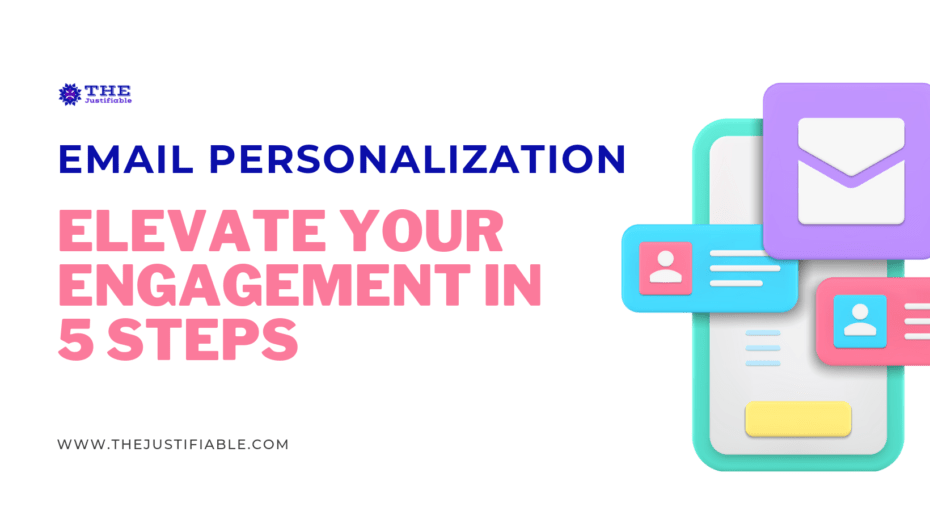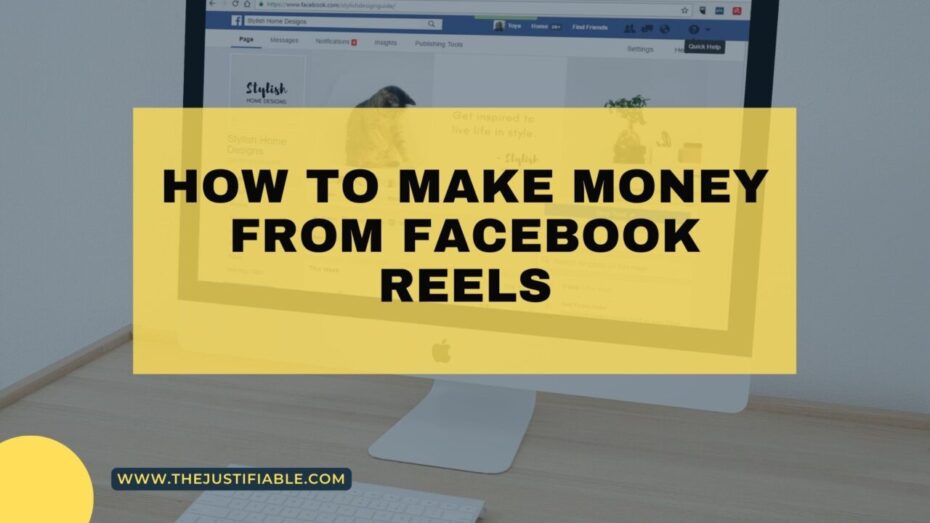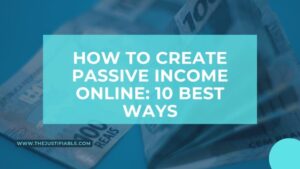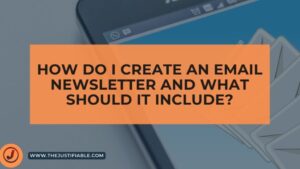Email personalization has rapidly evolved from a niche marketing strategy to an essential component of successful email marketing. In the age of information overload, recipients are seeking relevance in every message they open.
Tailored content, specifically curated for the individual, not only meets this expectation but exceeds it, fostering a deeper connection between businesses and their audiences.
The Importance of Personalizing Your Email Campaigns
The digital era has brought about a multitude of ways for brands to communicate with their customers, yet email remains one of the most potent tools in the arsenal. However, with the increasing volume of emails being sent every day, how do you ensure that your message doesn’t get lost in the shuffle? The answer lies in email personalization.
Personalizing your email campaigns is no longer just a luxury; it’s a necessity. Customers today are inundated with a plethora of generic emails that often end up in the trash folder without a second glance. Personalized emails, on the other hand, resonate because they feel like they’ve been crafted just for the recipient. This level of attention fosters trust, builds brand loyalty, and significantly increases the chances of a recipient taking a desired action.
Furthermore, email personalization goes beyond just using the recipient’s first name. It encompasses understanding their preferences, behavior, past interactions, and using this information to create a bespoke email experience. Such tailored experiences can lead to higher open rates, improved click-through rates, and most importantly, better conversion rates.
Overview of how email personalization can elevate engagement
Engagement is the cornerstone of any effective email campaign. While there are various metrics to measure success, if your audience isn’t engaging with your content, the chances of achieving your goals diminish drastically. Email personalization emerges as the hero in this context.
When you send out a personalized email, you’re essentially communicating to the recipient that you understand their needs, preferences, and challenges. This sense of understanding fosters a unique kind of connection, encouraging the recipient to engage with the content. For instance, a personalized product recommendation based on a user’s browsing history can incite curiosity, leading to higher click-through rates.
Moreover, personalization taps into the psychological aspect of feeling recognized and valued. When recipients feel that a brand values them as unique individuals, they are more inclined to engage, be it through reading the email, clicking on a link, or even making a purchase.
The Basics of Email Personalization
Email personalization has emerged as a pivotal tool in today’s marketing landscape, offering a direct and profound connection between businesses and their audience. At its core, it seeks to create a unique experience for every individual within the vast digital expanse. Let’s delve deeper into what this entails and the multitude of benefits it presents.
What is email personalization?
Email personalization is the art and science of tailoring email content to match the specific preferences, behaviors, and needs of individual recipients. Unlike generic email campaigns that broadcast the same message to an entire email list, personalized emails aim to speak directly to the recipient, treating them as an individual rather than just another name in the database.
The process often involves leveraging data and insights collected from subscribers. This can range from basic information like their first name to more intricate details such as browsing history, past purchase behavior, and even geographic location. Using this data, marketers can create content that feels inherently personal and relevant.
However, it’s essential to note that email personalization is not just about inserting a recipient’s name into the email subject or body. It’s about delivering timely, relevant, and engaging content that caters to an individual’s unique needs and preferences, ensuring that each interaction with the brand is meaningful.
Benefits of tailoring emails to individual recipients
The shift towards email personalization has been driven by its impressive array of benefits, both for businesses and their customers.
For the audience, a personalized email serves as a breath of fresh air amidst the clutter of generic messages. It signals that a brand is invested in understanding and catering to their specific needs, fostering a sense of trust and loyalty. A well-personalized email can evoke a feeling of being valued, leading recipients to engage more readily and enthusiastically.
From a business perspective, the advantages are manifold. Firstly, email personalization often leads to increased open and click-through rates. When a message resonates, recipients are more likely to explore further, boosting overall engagement.
Furthermore, this strategy can significantly enhance conversion rates. A recommendation or offer tailored to an individual’s preferences is far more compelling than a one-size-fits-all approach.
Additionally, by ensuring that content is relevant and timely, businesses can reduce the likelihood of subscribers opting out or marking emails as spam. This not only preserves the subscriber base but also enhances the brand’s reputation.
5 Steps to Master Email Personalization for Better Engagement
Mastering email personalization is the key to unlocking unparalleled engagement with your subscribers. Personalized emails foster a sense of individual care, which goes a long way in establishing trust and loyalty. To craft such specialized content, one must follow a systematic approach. Let’s begin our exploration with the first three pivotal steps.
Step 1: Segment Your Email List
Segmentation forms the bedrock of any successful email personalization strategy. It refers to the practice of dividing your email list into smaller, more specific groups based on various criteria. This can be demographics like age and location, behavioral patterns like past purchases, or even how they interacted with your previous emails.
Why is this step so crucial? Well, imagine trying to engage with a diverse group, including college students, retirees, and middle-aged professionals with the same content. It’s nearly impossible to craft a message that resonates with everyone. By segmenting, you ensure that the content you send out aligns more closely with the interests and needs of each group.
For instance, a fashion brand might send summer fashion tips to their subscribers in warmer regions while sharing winter fashion guides to those in cooler areas. By ensuring that your audience receives content relevant to their current situation, you drastically improve the chances of engagement.
Step 2: Utilize Dynamic Content
After segmentation comes the application. Dynamic content is the mechanism through which you can tailor the email content to each segment or even individual subscribers. Essentially, it involves creating parts of your email that change based on whom you’re sending it to.
This dynamic shift might seem minor, like adjusting the product recommendations based on a subscriber’s browsing history. Or it might be more noticeable, such as changing the entire layout and theme of the email depending on the recipient’s age group. The aim is to provide a unique experience for each subscriber, making them feel the content was crafted specifically for them.
Imagine a subscriber who recently browsed a selection of books on your online store. Utilizing dynamic content, your subsequent email could highlight those exact genres or authors, creating a seamless browsing-to-purchase journey for the user.
Step 3: Implement Trigger-Based Emails
Trigger-based emails are the epitome of timely relevance. They are sent out in response to specific actions or behaviors demonstrated by a subscriber. This ensures that the content they receive is not just personalized but also immediately relevant to their recent interactions.
For instance, if a subscriber adds a product to their cart but doesn’t complete the purchase, a trigger-based email might be sent a few hours later, reminding them of their unpurchased items. This not only serves as a nudge towards completion but also demonstrates attentiveness on the brand’s part.
Another scenario could be sending out a birthday discount code a week before a subscriber’s birthday. These action-driven emails show subscribers that their interactions with your brand aren’t lost in the void but are noted and responded to, creating a more dynamic and engaged relationship.
Step 4: Personalize Email Subject Lines and Preheaders
The first interaction a subscriber has with your email isn’t the body of the message but the subject line and preheader. These two elements, albeit brief, have a disproportionate impact on whether your email gets opened or glossed over.
A personalized subject line is akin to someone calling out your name in a crowded room. It immediately catches your attention. By integrating aspects of the recipient’s identity or behavior, you can make your email stand out amidst the multitude in their inbox.
For instance, instead of a generic “Check out our latest collection!” a more personalized touch like “Sarah, we thought you’d love these new arrivals!” can make all the difference.
Preheaders, the snippet of text that follows the subject line, further complement this personal touch. They provide a sneak peek into the content of the email, and when tailored to the recipient, can significantly heighten intrigue and improve open rates.
Together, personalized subject lines and preheaders act as a potent duo, enticing subscribers to delve into the content that awaits, setting the stage for deeper engagement.
Step 5: Use Analytics and Feedback for Continuous Improvement
The journey of email personalization doesn’t end once the email is sent. In fact, that’s where the next phase begins – the analysis and refinement stage.
Analytics provide a goldmine of information about how recipients are interacting with your emails. Open rates, click-through rates, and conversion rates are standard metrics that can shed light on the effectiveness of your personalization efforts.
For instance, if personalized emails consistently achieve higher open rates than generic ones, it’s a clear indication of their efficacy.
However, numbers alone don’t tell the whole story. Feedback, both direct from subscribers and inferred from their behavior, is invaluable. For instance, if a subscriber frequently opens emails but never clicks through, it could signify an interest mismatch between the subject line and the actual content.
It’s also worth periodically seeking direct feedback. Simple surveys asking subscribers about their content preferences or feedback on recent changes can provide actionable insights.
Common Challenges in Email Personalization and How to Overcome Them
Email personalization is a double-edged sword. When done right, it can significantly elevate user engagement and build trust. However, it’s not without its pitfalls. As marketers navigate the intricacies of crafting highly tailored content, they often encounter a slew of challenges.
By understanding these hurdles and strategizing effectively, these challenges can be transformed into opportunities for growth.
Avoiding the “creepy” factor: Striking a balance between personalized and invasive
One of the delicate lines to tread in email personalization is ensuring that the content doesn’t come across as overly intrusive. It’s one thing to show a subscriber that you understand their preferences, but it’s another to make them feel watched or tracked.
For instance, referencing a product they glanced at for a few seconds or an article they didn’t spend much time on can feel invasive. So, how do you strike the right balance?
The key lies in being transparent about the data you collect and how you use it. Regularly reminding subscribers about their data preferences, giving them easy options to modify them, or even opt-out can build trust. It’s also beneficial to use personalization judiciously.
Instead of bombarding subscribers with hyper-specific references, mix in more generalized content that still aligns with their preferences. This creates a balanced blend of personalization without crossing into the realm of being “creepy.”
Ensuring data accuracy for targeted campaigns
Data is the lifeblood of email personalization. However, inaccurate or outdated data can quickly derail even the best personalization strategies. Imagine sending a birthday offer to a subscriber on the wrong date or recommending products based on outdated preferences.
The solution lies in regularly updating and cleansing your data. This involves removing outdated information, correcting inaccuracies, and continuously enriching data profiles with fresh insights.
Using double opt-in methods where subscribers confirm their details can reduce initial errors. Periodically prompting subscribers to update their preferences or profile information ensures that the data remains relevant over time.
Moreover, automating data validation processes and using tools that highlight anomalies or inconsistencies can be invaluable. The goal is to maintain a dynamic and accurate database that evolves with your subscribers.
Overcoming technical barriers and integration issues
As brands leverage multiple tools and platforms for various marketing efforts, integrating them seamlessly for effective email personalization can become a challenge. Disjointed systems can lead to data silos, making it hard to access holistic subscriber profiles.
Choosing platforms and tools that offer native integrations with other commonly used marketing technologies is a good starting point. If native integrations aren’t available, consider leveraging middleware platforms that can bridge the gap between different systems.
Furthermore, investing in training and knowledge transfer ensures that your team is well-equipped to handle and troubleshoot integration challenges. Often, the technical barriers aren’t due to the technology itself but gaps in understanding or utilization. Regular audits and reviews of the technology stack can identify bottlenecks and streamline processes.
Best Practices to Elevate Your Email Personalization Game
As we’ve navigated the intricacies of email personalization, understanding the challenges and their solutions, it’s equally pivotal to recognize the best practices that can enhance the quality and impact of your personalized emails.
By adopting these strategies, brands can not only avoid pitfalls but also consistently deliver emails that resonate deeply with subscribers.
Prioritize Subscriber Consent and Privacy
In today’s digital landscape, privacy is paramount. With regulations like GDPR and CCPA coming into play, respecting and upholding subscriber privacy isn’t just ethical but also a legal requirement.
Start by ensuring transparent data collection methods. Clearly communicate what data you’re collecting, why you’re collecting it, and how it will be used. Offer subscribers easy ways to access, modify, or delete their data. By positioning your brand as a trusted guardian of subscriber data, you enhance credibility and foster stronger relationships.
Test, Analyze, Repeat
The beauty of email marketing, personalized or not, lies in its measurability. Every campaign provides a wealth of data that can be used to refine subsequent efforts.
Adopt an A/B testing approach for various personalization tactics. This could involve testing different subject lines, personalization depths, or even send times. By comparing performance metrics, you can identify what resonates best with your audience.
Post-campaign analysis shouldn’t be limited to just open rates and click-through rates. Dive deeper into metrics like engagement time, scroll depth, and even post-click website activity. These insights offer a holistic view of subscriber behavior, enabling more nuanced personalization strategies.
Keep the Human Touch Alive
While automation tools and advanced algorithms play a pivotal role in email personalization, the essence of communication is human connection. Personalized emails shouldn’t feel robotic or formulaic.
Encourage your content team to craft emails that sound genuine and conversational. Sometimes, a simple “We thought you’d like this!” can be more effective than a hyper-targeted product recommendation based on complex algorithms.
Remember, the goal of email personalization is to make subscribers feel valued and understood. By intertwining advanced tech with genuine human touch, brands can create memorable email experiences that stand out in crowded inboxes and foster lasting relationships.
Case Study: Success Stories in Email Personalization
In the ever-evolving landscape of digital marketing, email personalization has emerged as a key differentiator for brands aiming to deepen their connections with subscribers. While theory and strategies provide a foundation, real-world success stories offer tangible insights into what works.
Delving into the experiences of brands that have aced personalized email campaigns can pave the way for others to replicate and adapt these successes.
A look at brands that have mastered the art of personalized email campaigns
One of the most notable success stories in recent times comes from the online retail giant, Amazon. While they cater to a vast and diverse customer base, their email campaigns feel incredibly personalized. By leveraging browsing history, past purchases, and even abandoned cart items, Amazon crafts email recommendations that often feel intuitive and timely.
Many users have recounted instances where an email from Amazon introduced them to a product they’d been considering but hadn’t explicitly searched for. It’s this deep understanding and anticipation of user needs that sets their email personalization strategy apart.
Another brand worth mentioning is Spotify. The music streaming service sends out personalized emails containing new music suggestions, playlist recommendations, and even year-end summaries of a user’s listening habits.
These emails are not just tailored based on genre preferences but also listening habits, moods, and times of the day. It’s a holistic approach that combines data analytics with a deep understanding of the emotional connection users have with music.
Netflix, with its “Because you watched…” email series, is yet another testament to the power of personalized content. The platform uses viewing history and preferences to curate email lists of movie and show recommendations. More than just suggesting popular content, Netflix’s emails often spotlight niche genres or lesser-known titles, creating a sense of discovery for subscribers.
Key takeaways from successful email personalization campaigns
The brands that shine in email personalization share a few common traits. Firstly, they prioritize data accuracy and depth. By collecting diverse data points and ensuring their accuracy, they can craft emails that resonate deeply with subscribers.
Secondly, successful brands focus on timely and relevant content. It’s not just about knowing what a subscriber might like, but also about delivering it at the right moment. This could be a product recommendation when a need arises, a song suggestion for a particular mood, or a movie recommendation for a lazy weekend evening.
Lastly, and perhaps most importantly, these brands understand the value of subtlety. Effective personalization isn’t about bombarding subscribers with data-driven content, but about weaving data insights seamlessly into genuine, human-centric communication. It’s about making each subscriber feel seen and valued, not as a data point, but as an individual with unique preferences and needs.
Conclusion: The Future of Email Personalization
Email personalization is not just a fleeting trend; it’s fast becoming the backbone of effective digital marketing. As we draw insights from the past and present of personalized email campaigns, it’s equally crucial to look ahead.
The future holds promises of even more advanced techniques, data analytics, and a richer understanding of subscriber preferences and behaviors. Let’s explore the emerging trends and what they signify for businesses aiming to connect deeper and more meaningfully with their audiences.
Emerging trends in email marketing and personalization
The digital landscape is continuously evolving, and with it, the intricacies of email personalization. Artificial intelligence (AI) and machine learning are at the forefront of this transformation.
Brands are expected to harness these technologies even more, crafting emails based on predictive analytics, which doesn’t just rely on past behaviors but anticipates future actions of subscribers. Imagine emails that know what a subscriber might need or prefer even before they do!
Voice technology integration is another anticipated trend. With devices like Alexa and Google Home becoming household staples, it’s only a matter of time before emails become voice-responsive, allowing users to interact and engage with content using voice commands.
Personalization is also expected to go beyond the email content. The future may see emails tailored to fit seamlessly into the user’s daily life routine, understanding when they’re most likely to read, engage, or make a purchase. It’s a holistic approach, intertwining data analytics with a keen understanding of human behavior.
Final thoughts on maximizing your email engagement through personalization
The world of email personalization is vast, dynamic, and full of potential. However, amidst the dazzle of technology and data, it’s essential to remember the core purpose: building genuine, meaningful relationships with subscribers.
Regardless of how advanced our tools and strategies become, the essence of effective email marketing will always boil down to understanding and valuing the human on the other side of the screen. Brands that prioritize this connection, blending technological prowess with authentic communication, will undoubtedly stand out in crowded inboxes.
As we step into the future, it’s not just about sending emails that subscribers open; it’s about crafting messages that they cherish, resonate with, and act upon. It’s about making every subscriber feel seen, understood, and valued. And as history and current successes have shown, the brands that master this art will be the ones that thrive.








